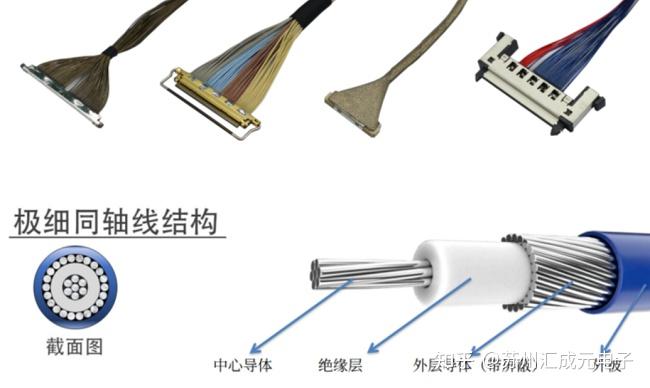Categorization:Harness Component
In electronic devices, cables are often the most overlooked part, but they directly affect the stability of signal transmission. Many engineers encounter a professional term when choosing cables—shielding weave density. So what does it mean? Why can extremely fine coaxial cables (Micro Coaxial Cable) stand out in precision equipment? This article will take you to understand these two topics.
The meaning of wire屏蔽编织 density
In electronic cables, the shielding layer serves to block external electromagnetic interference (EMI) and ensure stable signal transmission. The shielding weave density refers to the tightness of the metal weave covering the surface of the cable. The higher the density, the better the shielding effect and the stronger the anti-interference ability; low density is prone to allow electromagnetic waves to "squeeze through," leading to signal distortion; while high density, although providing better shielding, reduces flexibility and increases weight, making it not the best choice for devices with high requirements for lightness. Therefore, weave density is not the better the higher, but needs to find a balance between shielding effect and application scenarios.
Unique Advantages of Extra-Fine Coaxial Lines
Extremely fine coaxial cables have been widely used in recent years in fields such as medical imaging equipment, smart terminals, and camera modules. The reasons for their popularity lie in the good balance between size and performance: the extremely small diameter can be as thin as 0.3mm or even finer, allowing for wiring in extremely limited spaces; the lightweight design is lighter than traditional coaxial cables, significantly reducing the weight of the equipment, especially suitable for handheld or mobile devices; the efficient shielding structure can ensure stable signal transmission even at extremely thin diameters through high-density weaving or composite shielding design; they support high-speed transmission and can meet the needs of multi-Gbps high-speed differential signals such as MIPI and LVDS; at the same time, they have good flexibility and durability, suitable for repeated bending and complex motion environments.
The weave density determines the cable's ability to resist interference, while ultra-fine coaxial cables, while maintaining excellent shielding performance, also take into account small size, lightweight, and high flexibility. For this reason, they have become the core connection solution in precision equipment such as medical, imaging, and communication.
I am[Suzhou Huichengyuan Electronic], long-term focused on the design and customization of high-speed cable harnesses and ultra-thin coaxial cable harnesses, committed to providing customers with stable and reliable high-speed interconnection solutions. If you have any related needs or want to learn more, please contact:Manager Zhang 18913228573 (WeChat number the same)。